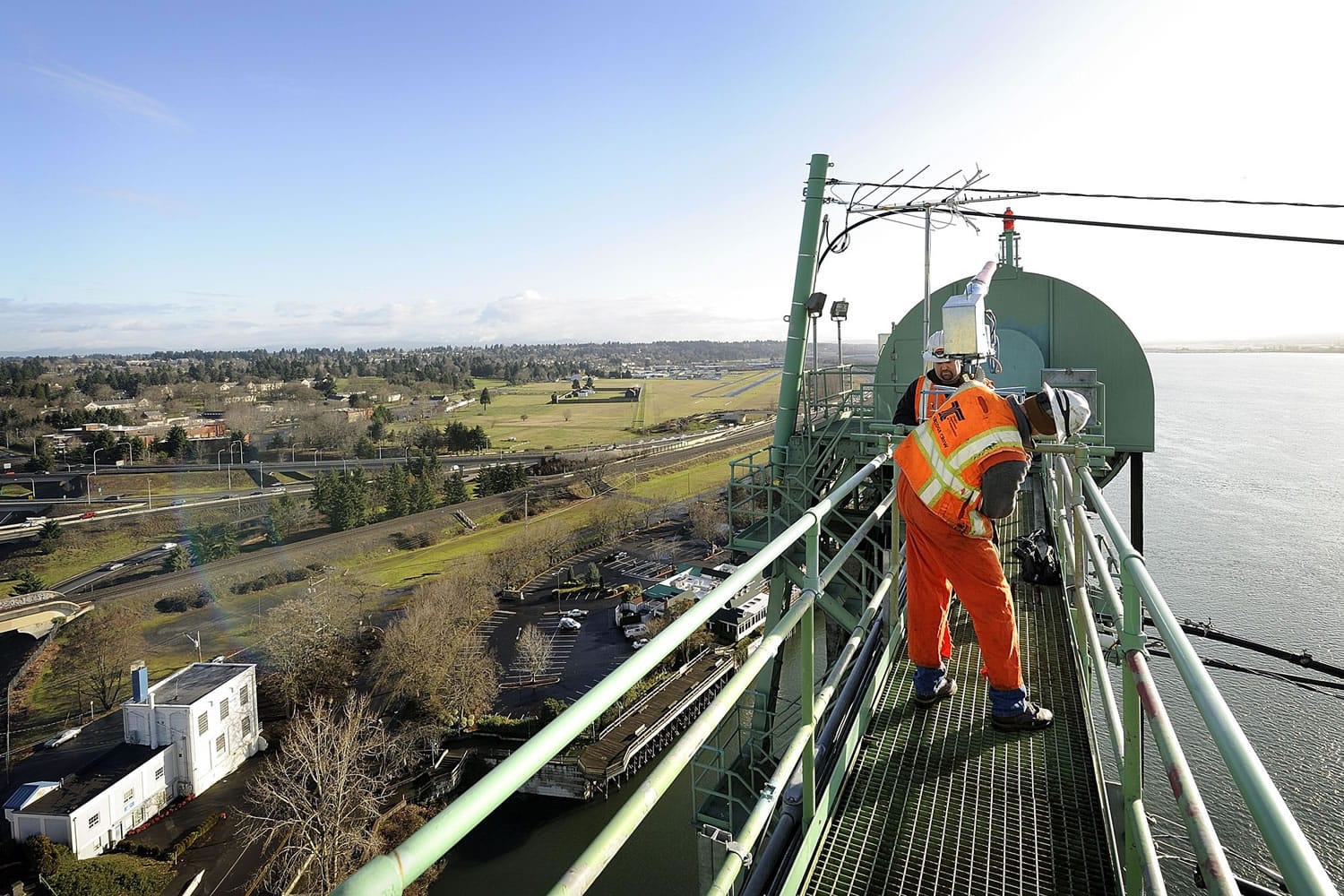They’ve tried chemicals. They’ve tried sharp-edged moldings. Noisemakers. Banging the structure.
On Thursday, Oregon Department of Transportation crews reloaded their latest weapon of choice in the ongoing war against starlings on the Interstate Bridge: Propane-powered air cannons.
ODOT bridge supervisor Marc Gross, along with bridge coordinator Ryan Cox, made the trek to the top of the twin span’s north towers to brace a single cannon on the narrow catwalk between them, 239 feet above the Columbia River. It will start firing next week and continue periodically through early March, Gross said. The cannons are used as a non-lethal way to scare off the birds that come by the thousands each fall and winter to roost on the bridge. In past years, as many as 30,000 starlings showed up at times, said ODOT spokeswoman Kimberly Dinwiddie.
“It was an unsightly mess,” Dinwiddie said. “There were bird droppings everywhere.”
The problem was more than cosmetic. The droppings also create a health and safety hazard for crews that work on the bridge, and can corrode the steel and cables that support it.
ODOT has been using the air cannons since 2003. But crews are careful not to deploy them with any kind of regularity — the number of cannons has varied from one to as many as seven last year, and firing days will be randomly scattered over the next month. The trick, Gross said, is to make sure the birds don’t get used to it in the same way they’ve become comfortable with traffic and jet noise.
“I have to keep it mixed up and threatening enough to them to disturb that happy place,” he said.
The cannon will reach a noise level of about 95 decibels when it fires, usually in the hours around sunset, according to ODOT. Traffic on the bridge clocks in at about 90 decibels, and a jet flying over measures about 100. In other words, the cannons are easily loud enough to hear from the ground nearby.
Thursday’s installation started with a well-timed bridge lift just after 9:30 a.m., also clearing the way for a barge to make its way under the bridge while Interstate 5 traffic stopped. Gross and Cox stood on the freeway span as it rose, smoothly moving toward huge counterweights — roughly the width of each span — that lowered simultaneously.
Workers in the bridge house below leveled out the span and counterweights once the barge was clear. Gross and Cox then stepped onto one of the counterweights themselves, waited inside its guard rails, and rode it the rest of the way to the top as the bridge lowered back down. Freeway traffic picked up again by the time they climbed to the catwalk on top of the bridge, just a short flight of stairs from the weights’ top resting place.
The air cannon wasn’t the only item on the to-do list for this trip. Cox also replaced a bulb in one of the towers’ flashing red lights. On the way back down, he and Gross took a zigzagging stairway down the length of the bridge tower.
In the battle against starlings, air cannons have shown good results so far, according to ODOT. Their numbers have dropped significantly, but the persistent birds are far from gone. As many as 5,000 of them still gather on the span at times, Dinwiddie said.
They’ll become a little less comfortable starting Monday. That’s when the cannon starts firing.
“We want to keep them guessing,” Dinwiddie said.
Eric Florip: 360-735-4541; http://twitter.com/col_enviro; eric.florip@columbian.com




